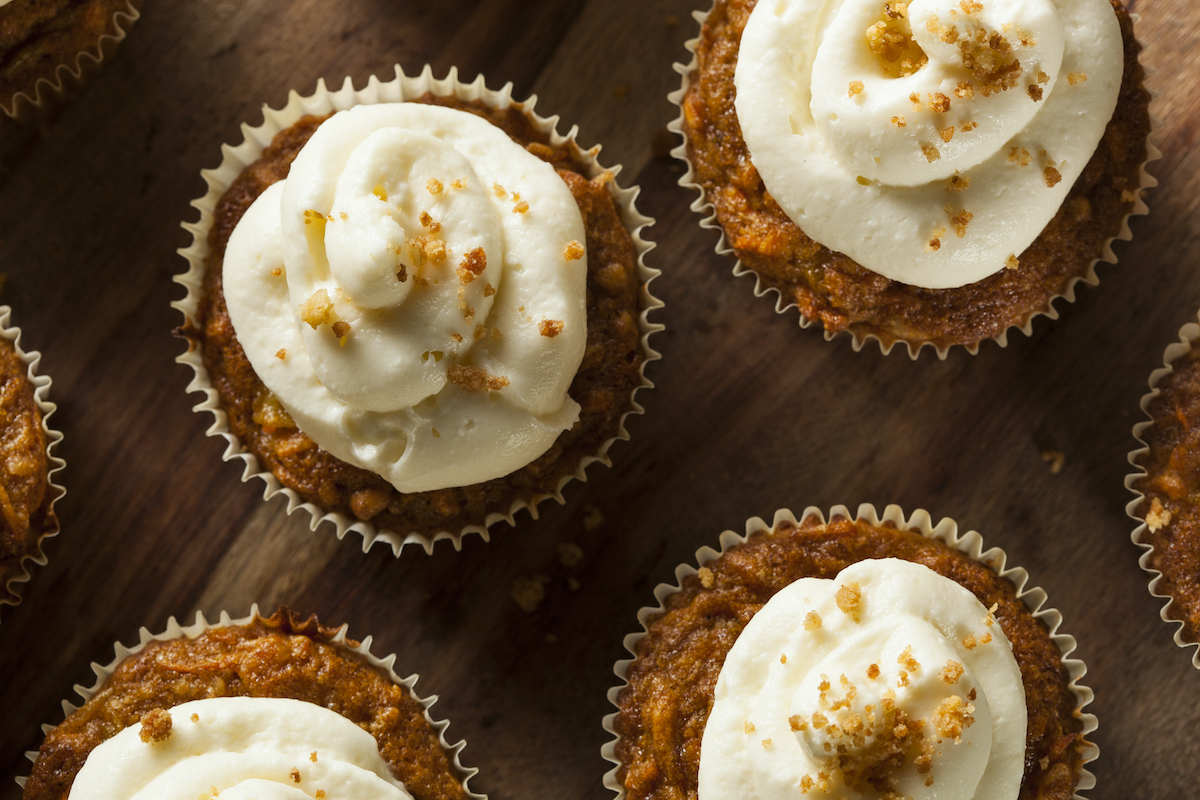Planning to whip up a showstopping carrot cake for Easter? You’ll need a frosting that’s equally impressive — light and fluffy, yet rich and flavorful enough to steal the show.
There’s something inherently joyful about a beautifully decorated cake. It draws out those delighted gasps and effusive praise: This cake is amazing! What’s in this frosting?!
Because let’s be honest — the frosting is often what gets people talking. Sure, the cake is important (a dessert can’t live on frosting alone), but frosting is the focal point. It’s the face of the cake, the glossy veneer, the carefully crafted crown that covers any flaws and makes a dramatic first impression.
So, it needs to be perfect. Not just in looks — though a frosting should be aerated and smooth, with enough firmness to hold shape — but also in taste. That’s where balance comes in.
It’s all about balance
A great frosting isn’t just sweet. It should play off the cake, adding contrast or complement. The goal isn’t to double down on sugar, but to create complexity. You want the eater to pause mid-bite and say, “Wait — what is that flavor?” rather than, “Whew, that’s sweet.”
Take Krispy Kreme’s Chocolate Iced Kreme Filled Doughnut. The filling has a surprising hint of salt, which cuts through the richness and prevents the donut from feeling cloying. It’s subtle, but it transforms the experience. That’s the kind of dynamic you want in a good frosting.
The ingredients
Most cream cheese frostings call for just a handful of ingredients — typically cream cheese, sugar, vanilla and salt. Cream cheese provides the base; vanilla adds warmth and aroma; salt sharpens the flavors; and sugar rounds out the tang.
From there, you can build. I like adding a splash of dairy — cream, half-and-half or even buttermilk — to soften the cream cheese and create a silkier texture. Lemon juice or zest adds brightness and cuts through the richness. Mascarpone, a lush Italian cream cheese, lends depth and smoothness.
Depending on your flavor preferences, spices like cinnamon or ginger can bring a cozy warmth — especially nice with carrot cake.
And please, don’t skimp on the salt. A pinch can make all the difference in balancing sweetness and enhancing complexity.
We need your help to stay independent
The technique
But here’s the real secret: it’s all in the method.
Whip, whip, whip. You want to incorporate as much air as possible. A dense frosting won’t do your cake any favors—it should be cloud-like, yet sturdy enough to hold its shape when piped. Think of the frosting on a cupcake: you want peaks that stand tall, not slump.
If you’re adding cream, there are two options:
All-in-one method – Follow pastry chef and cookbook author Stella Parks’s advice from Serious Eats: mix cream, sugar and cream cheese together in one bowl. The cream helps dissolve the sugar, while the sugar stabilizes the cream cheese, preventing over-whipping.
Fold-in method – Whip the cream cheese base separately. Then whip heavy cream until airy and gently fold it into the base. This creates an especially light and silky texture, though it’s a bit more effort.
The sugar debate
Most bakers reach for powdered sugar, but I’ll admit: I like the slight texture of granulated sugar. It gives the frosting a bit of chew and lets the tanginess of the cream cheese shine through—especially when you use less sugar overall.
Also, while I’m usually a brown butter devotee, it’s too temperamental here. Skip the butter entirely. This way, when someone hears “cream cheese frosting,” that’s exactly what they taste—pure, tangy, balanced perfection.
Final thoughts
The best cream cheese frosting should be luscious, structurally sound, and just sweet enough to enhance—not overpower—the cake. It should balance tang, richness and lightness, and it should feel like an integral part of the dessert, not just an afterthought.
Stay tuned for my carrot cake recipe coming soon—complete with this frosting technique. Buona Pasqua!

